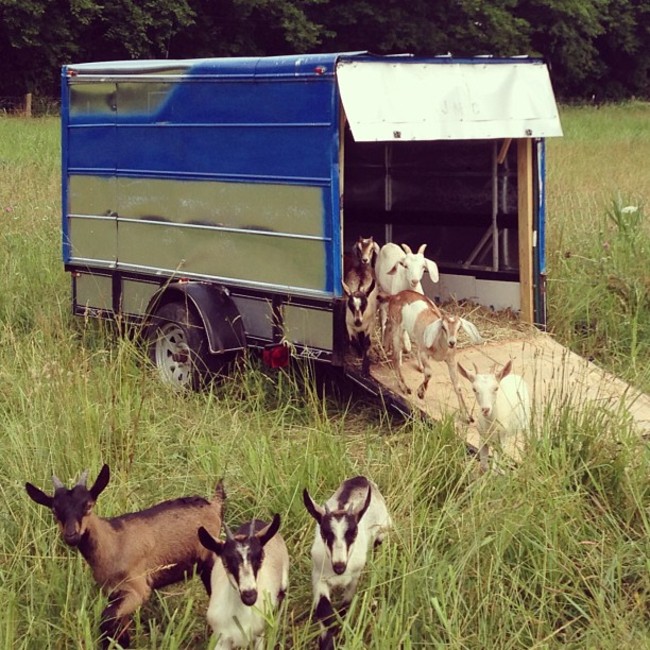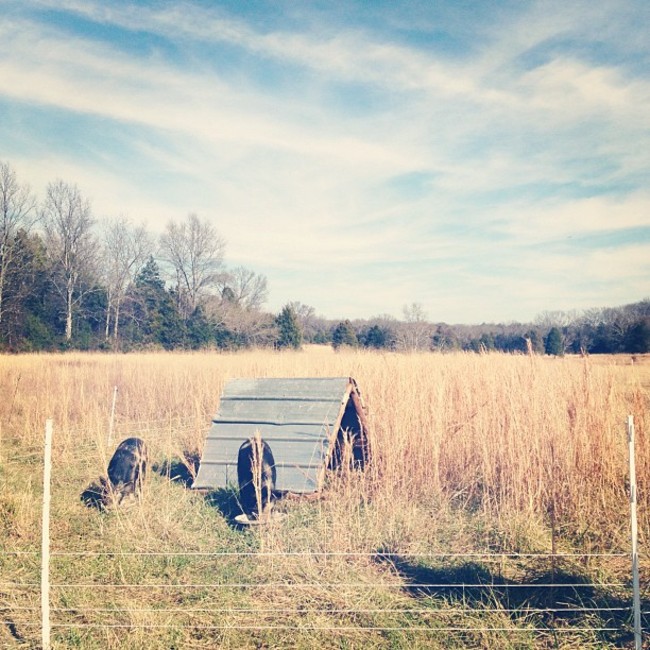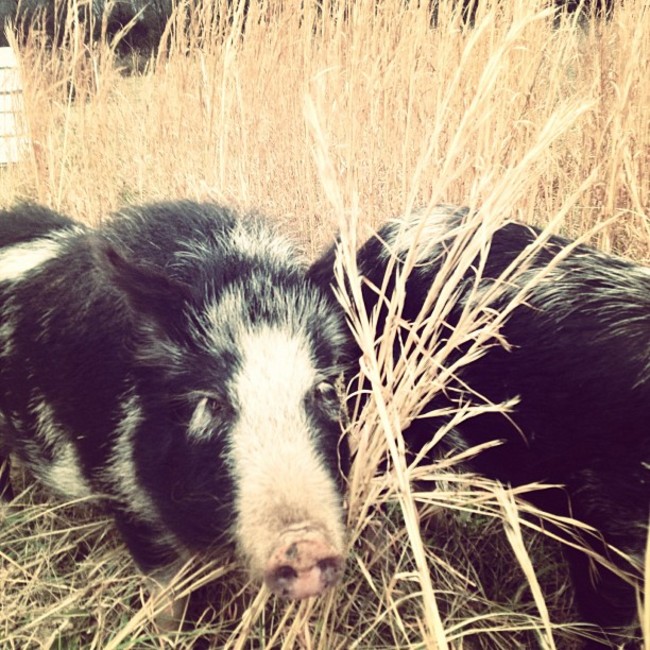 Goat babies and their portable taco truck shelter
Goat babies and their portable taco truck shelter
Y'all are due for an update on the baby goats. It's been a while!
Almost three months into their little lives they are all wonderfully happy and healthy. Our final tally was 7 doelings and 3 bucklings. We are retaining all the doelings to grow our milking herd and we're also retaining one of the bucklings to serve as a herd sire next year. The other two bucklings are available for sale, so shoot us an email if you're interested (farmer@littleseedfarm.com), both come from great milk lines and would make excellent herd sires. One is an Alpine and the other is a Nubian.
Until recently, we had been training the goat kids to the electric fencing by rotating them around our front and back yards. The grass is shorter in the yard and we can keep an eye on them a lot easier. After grazing all day we would put them back in the pen where they would spend the night. We used a pen/barn area at night to keep them safe since they didn't have a guard dog with them.
But now they're big kids and they turned into voracious foragers. Our lawn just wasn't cutting it for them and they were proving to be well-trained to the electric fence. All they needed was a portable shelter and we could have them out in the fields, rotationally grazing just like the big goats.
I went on Craigslist and found a trailer that had been in the process of conversion into a "food truck" of sorts, but never quite made it. It was a guy's pet project for making a portable food trailer for his family's BBQ's, but he just didn't have the time to finish it out. It just so happens the unfinished food truck projects also make excellent portable goat housing. So I snapped it up and now the kids have their own taco truck. I love watching them pile out of it, it's like a clown car, only it's baby goats jumping out of a pseudo-taco truck, which is far more entertaining than creepy clowns.


